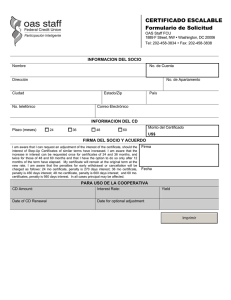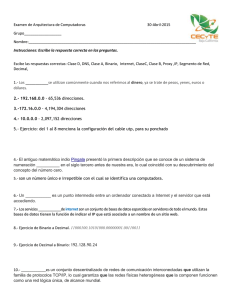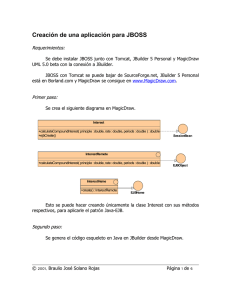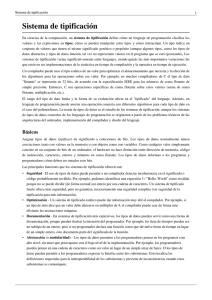of each year for 10 years. To determ a = p (1 + r)
Anuncio
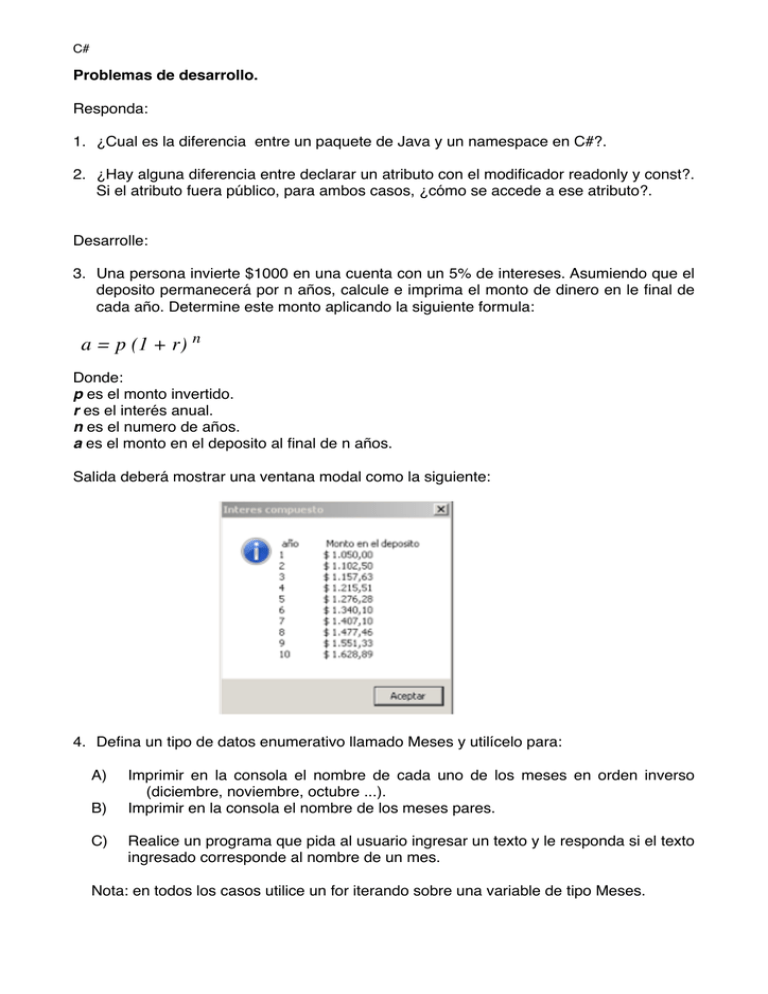
Similarly, the initialization sum = 0 could be merged into the initialization section
for structure.
Statements that precede a for and statements in the body of a for oft
C#
n be merged into the for header. However, such merging could decrease the readabil
Problemas de desarrollo.
the program.
Responda:
Good
Programming Practice 5.5
1. the
¿Cual
diferenciastructure
entre un paquete
y un namespace
en C#?.
Limit
sizeesofla control
headersdetoJava
a single
line if possible.
2. ¿Hay alguna diferencia entre declarar un atributo con el modificador readonly y const?.
Si el atributo fuera público, para ambos casos, ¿cómo se accede a ese atributo?.
The next example uses a for structure to compute compound interest. Consider t
lowing problem
statement:
Desarrolle:
A person invests $1000.00 in a savings account yielding 5% interest. Assuming that
3. Una persona invierte $1000 en una cuenta con un 5% de intereses. Asumiendo que el
interestdeposito
is left on
deposit, calculate
print
the amount
of money
the
permanecerá
por n años,and
calcule
e imprima
el monto
de dineroinen
le account
final de at the e
aplicando
la siguiente
formula:
of eachcada
yearaño.
forDetermine
10 years.este
To monto
determine
these
amounts,
use the following formula:
a = p (1 + r) n
where
Donde:
p es el monto invertido.
original
rp
esiselthe
interés
anual. amount invested (i.e., the
nres
numero
de años.
iselthe
annual
interest rate
a es el monto en el deposito al final de n años.
principal)
n is the number of years
a is the
amount
onuna
deposit
at modal
the end
of lathe
nth year.
Salida
deberá
mostrar
ventana
como
siguiente:
This problem involves a loop that performs the indicated calculation for each of the
ars that the money remains on deposit. A solution is the program shown in Fig. 5.8.
Line 11 in method Main declares two decimal variables—amount and prin
pal—and initializes principal to 1000.00. The type decimal is a primitive d
pe used for monetary calculations. C# treats such constants as the 1000.00 in Fig. 5
type double. Similarly, C# treats whole number constants, like 7 and -22, as havi
pe int. Values of type double cannot be converted implicitly to type decimal, so
e a cast operator to convert the double value 1000.00 to type decimal. It also is po
le to specify that a constant is of type decimal by appending the letter m to the co
nt, as in 1000.0m.
Line 12 declares double variable rate, which we initialize to .0
4. Defina un tipo de datos enumerativo llamado Meses y utilícelo para:
A)
Imprimir en la consola el nombre de cada uno de los meses en orden inverso
(diciembre, noviembre, octubre ...).
Imprimir
en la consola el nombre de los meses pares.
Fig.B)5.8:
Interest.cs
//
// Calculating compound interest.
C)
Realice un programa que pida al usuario ingresar un texto y le responda si el texto
ingresado corresponde al nombre de un mes.
using System;
Nota: en todos los casos utilice un for iterando sobre una variable de tipo Meses.
using System.Windows.Forms;
class Interest
{
C#
5. Escribir un programa que pida al usuario que ingrese un texto. Si el texto no es vacío
presentar un menú con tres opciones:
1) Pasar a mayúscula
2) Pasar todo a minúscula
3) Cantidad de caracteres
Permitir que el usuario pueda seleccionar la opción 1, 2 o 3 solamente.
